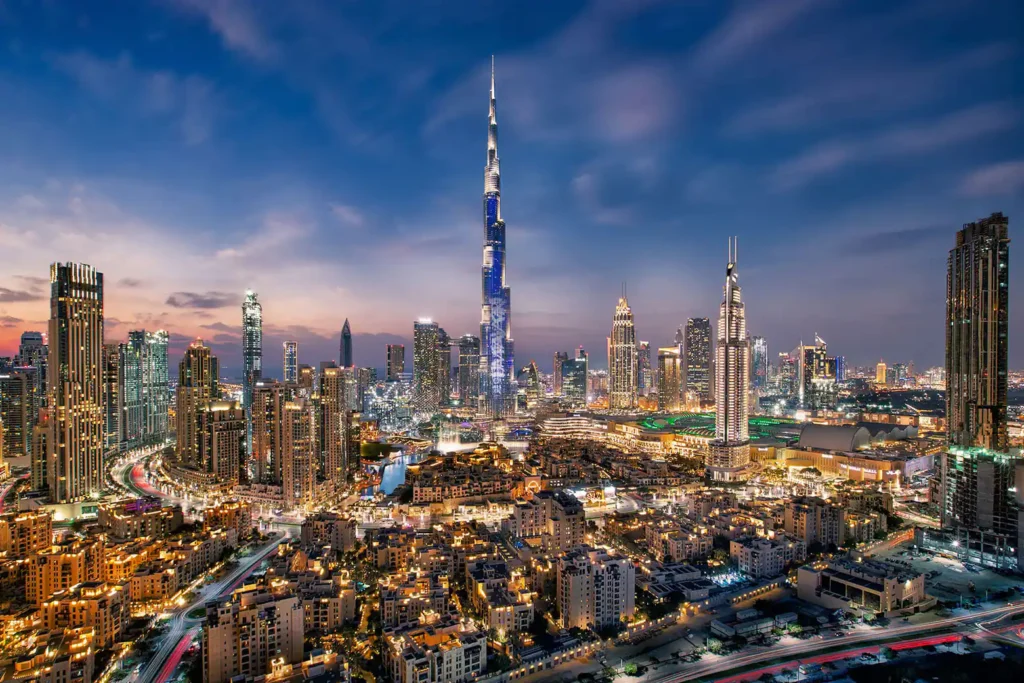Today, when people think of Dubai, they picture a city full of skyscrapers, luxury cars, massive shopping malls, and artificial islands. But long before all of this, Dubai was a quiet fishing village, surrounded by desert, with just a few simple buildings and sandy roads. Now, thanks to rare old photographs being shared online and in exhibitions, we’re getting a chance to look back and see how much this city has changed.
These photos, many of them taken in the 1960s, 70s, and 80s, offer a fascinating look at what life in Dubai used to be like. They show dusty streets, traditional souks, camels being used for transport, and small dhows floating in the Dubai Creek. It’s a side of Dubai that many young people today have never seen — and it’s both surprising and touching.
When Dubai Had No Skyscrapers
In the 1960s, Dubai was still developing. There were no high-rise towers like the Burj Khalifa or Burj Al Arab. Instead, there were small, simple homes made from palm fronds or coral stone, and businesses operated out of modest one-story buildings.

One of the most striking pictures from this time shows Sheikh Zayed Road — now known for being one of the busiest highways in the UAE — with hardly any traffic at all. In some photos, it’s even just a dirt road with a few cars, and mostly desert on either side.
Photographs of Deira and Bur Dubai from back then show a peaceful and close-knit community. People walked freely across the roads, and the Dubai Creek was the city’s heartbeat. Fishermen, traders, and pearl divers relied on it for their livelihoods, and wooden abras carried people across the water — something that’s still seen today, though with a much busier backdrop.

The Early Days of the Souks
The souks of Dubai, especially the Gold Souk and Spice Souk, are now famous tourist spots. But photos from the past show a much simpler scene. Merchants sat behind wooden stalls or spread their goods on the ground. Spices were stored in large sacks, and there were no glass displays or flashing lights.

Even the gold market was different. There were no modern stores with marble floors and air conditioning. It was more like a traditional bazaar, where bargaining was part of the fun and everyone knew each other by name.
Old Dubai Landmarks That Still Exist
Some of the buildings and places captured in these old photographs still stand today — though many of them have been renovated or expanded.
The Al Fahidi Historical Neighbourhood (also known as Al Bastakiya) is one such area. In old photos, it’s clear that this area was once the centre of community life, with wind towers used to keep homes cool and narrow alleyways connecting the neighbourhood. Today, Al Fahidi has become a cultural attraction where visitors can still get a feel for how Dubai once looked.
Another landmark that appears in many old photos is the Dubai Clock Tower in Deira. This structure, which still stands, once marked the entrance to the city’s main road. Back then, it was one of the tallest and most modern features of the area — now it’s surrounded by towering buildings and heavy traffic.
The Role of Oil in Changing the City
One reason Dubai changed so fast is because of oil. When oil was discovered in the 1960s, the city used the money to develop its infrastructure, build roads, airports, and later on, start major projects like the Dubai World Trade Centre — the city’s first skyscraper.
Photos from the late 1970s show the construction of this tower. At the time, it was the tallest building in Dubai and stood almost alone, surrounded by empty land. Today, it’s nearly hidden among hundreds of other taller buildings that form Dubai’s iconic skyline.
Daily Life in the Past

Old pictures don’t just show buildings — they show people too. And those photos of daily life are some of the most moving. You can see school children in uniform walking to class, families gathering at the beach, and men in traditional dress relaxing by the creek.
There are also images of open-air markets, camel races, and cultural festivals. Life back then was slower, more community-driven, and deeply connected to tradition.
One photograph shows a group of boys playing football in the sand using a makeshift goal post, with nothing but desert in the background. It’s a far cry from the modern sports stadiums and luxury gyms found across Dubai today.
A City That Still Respects Its Past
Despite all the changes, Dubai hasn’t forgotten its roots. The government has taken steps to preserve historical areas and make sure future generations understand what came before the skyscrapers and megaprojects.
Museums, cultural centres, and galleries across the city now feature old photographs and artifacts from the past. One of the most popular places to see these is the Etihad Museum, where visitors can learn about the UAE’s formation and Dubai’s transformation.
Social media has also helped. Many Instagram and Facebook pages regularly share rare photos of Dubai’s past, often with personal stories or memories from those who lived through those times.
Why These Photos Matter Today
These pictures remind us that Dubai’s success didn’t happen overnight. It was built step by step, by hardworking people who believed in the future of their city. From a quiet desert town to a global hub, Dubai’s journey is one of ambition, resilience, and vision.
For older residents, these images bring back memories. For younger generations and visitors, they offer a chance to appreciate how far the city has come. And for everyone, they are a powerful reminder that behind every tall tower and luxury hotel is a rich history worth remembering.
As more of these old photographs surface and get shared, they continue to connect the past with the present — telling the story of a city that dreamed big and made those dreams come true.
Also read: What Is a Credit Score in the UAE – And Why Should You Care?














